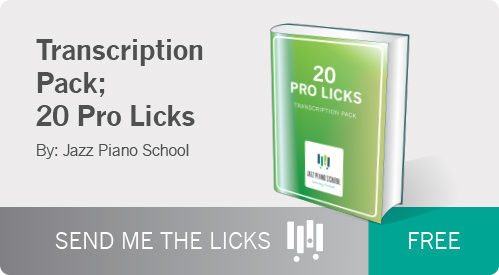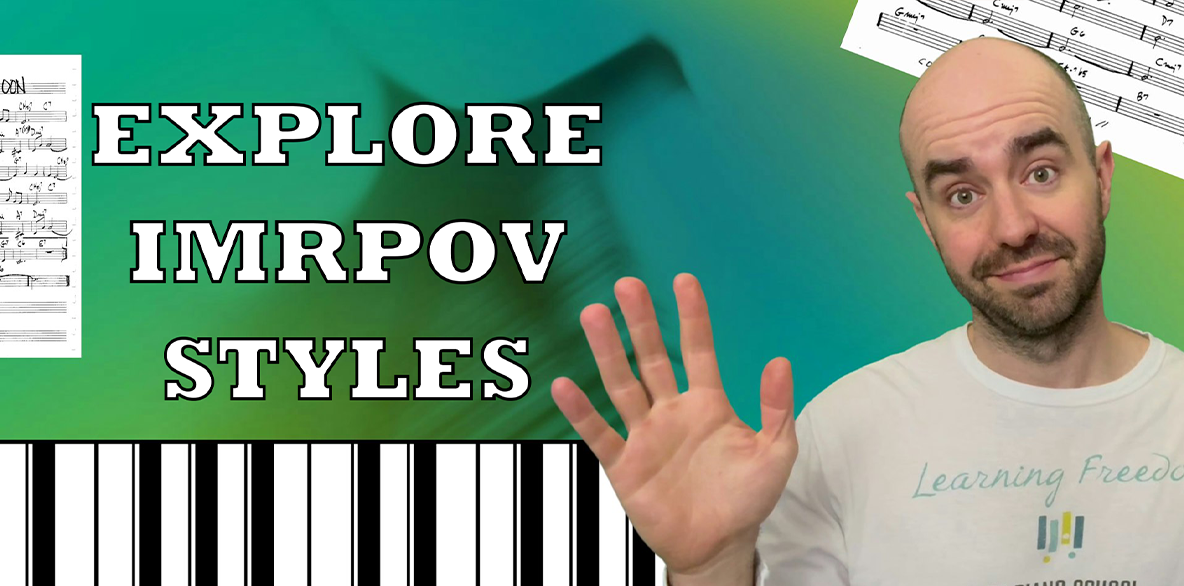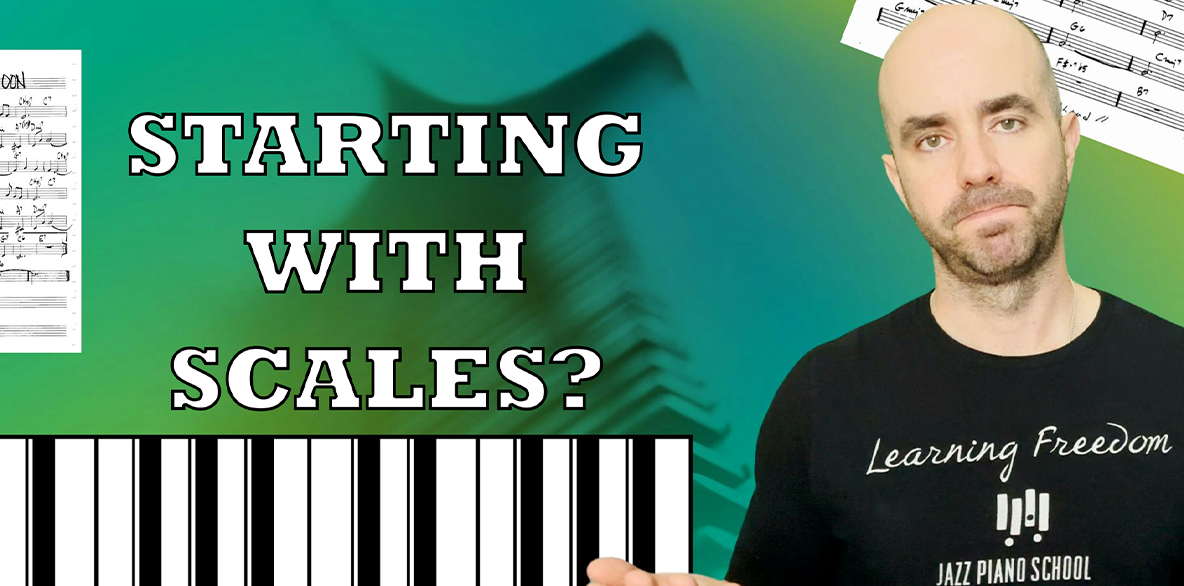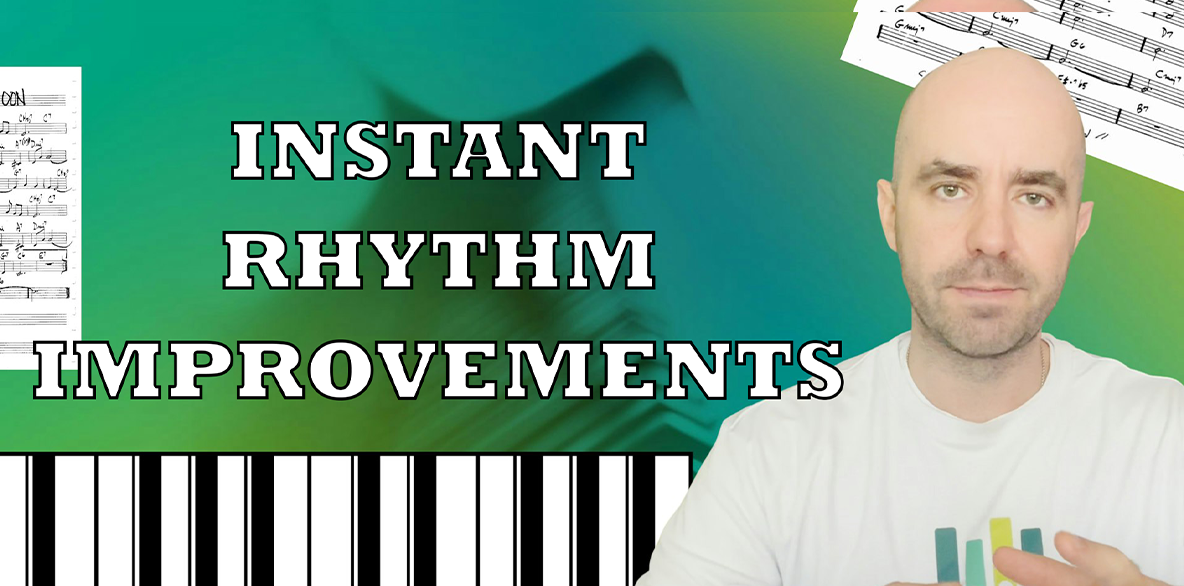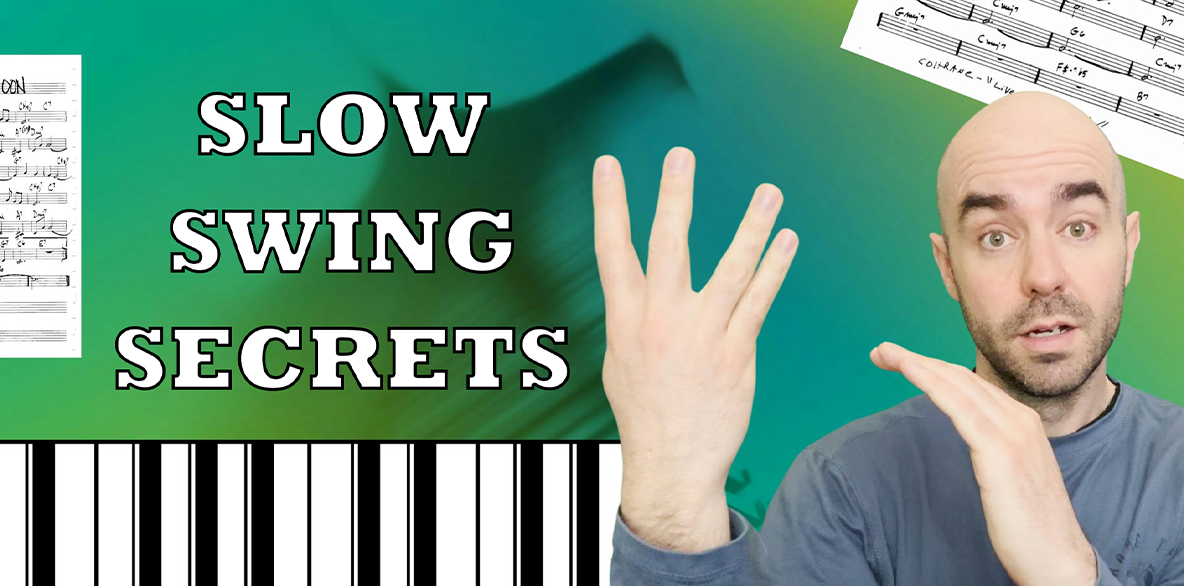Would you like a fantastic method for comparing pianist’s styles and learning about how harmony and improvised melody have developed? Then look no further than the 12-bar blues. Understanding and analyzing the blues has a lot of benefits. That knowledge gives you a framework for studying each and every great jazz pianist who has come before you. Lucky for us, the world’s greatest soloists of each era have at some point in their careers played and recorded a solo over a 12-bar blues.
Before we begin analyzing the development of jazz piano using the blues as our foundation, let’s talk about some of the different elements we have seen develop.
A 12-bar blues has a fairly straight-forward form. It consists of three phrases, sometimes thought of by jazz teachers as a question, follow-up, and answer. Generally speaking, the first phrase is centered around the tonic (or root), the second phrase moving to the four, and finally the third phrase creating the resolution with a V-I cadence. Take for example this blues in C:
|| C7 | F7 | C7 | (Gm7 C7) |
| F7 | F7 | C7 | (Em7 A7) |
| Dm7 | G7 | C7 | (Dm7 G7) ||
Within this simple, repeating structure, the piano greats have introduced different styles of left-hand chords, reharmonization, different melodic improvisation styles, and other elements. So let’s keep an ear out for the following ideas and how they have changed from pianist to pianist:
- The chordal structure: there’s always some sort of cadence at the end of the twelve bars, leading to a conclusion in bar seven.
- Three-phrase structure: question, development and answer format.
- Vocabulary used: is the pianist focusing on the blues scale? Is he playing with more linearity?
Next up, let’s examine the styles of the greats through the window of the Blues.
Art Tatum – Blues in Bb
https://www.youtube.com/watch?v=8llL1czb1yU
Art Tatum’s style is exemplified in this video of him playing over a Bb blues. Tatum is said to be the pinnacle of stride piano. This is an integral part of his style and is noticeable in this performance. Note how he consistently plays tenths in his left hand, often incorporating a stride style even while the band is playing. Tatum’s right hand melodic lines also tend to be based on a stride style, consisting of numerous arpeggiations of the chords. While Tatum is often considered to be the greatest jazz pianist of all time, it is interesting to note that his left hand often overpowers the bassist things Tatum was unaccustomed to playing with a band. This left hand comping style is something we will see develop. Next, let’s look at Bud Powell.
Bud Powell – Blues in the Closet
https://www.youtube.com/watch?v=ZIq-3pUzmuE
The development of the bebop style meant a great deal of chromaticism being introduced into melodic lines. It also meant the beginning of a left-hand comping style that accounted for playing with a band. One can note that in Art Tatum’s case, he was coming largely from a stride piano style, one that allowed him to accompany himself most of the time. While playing with a band, he continues to play in his characteristically dense style, often overpowering the group playing with him. Bud Powell, on the other hand, adapted to playing with a band by playing open left-hand voicings, focusing mostly just on the root and seventh. While this is a somewhat primitive way to voice the left hand while comping (one that is now part of Powell’s historic sound), it is still a step toward the rootless voicings that became commonplace later on.
Oscar Peterson – C Jam Blues
https://www.youtube.com/watch?v=NTJhHn-TuDY
Oscar Peterson draws a great deal from the two styles we’ve discussed so far. His left hand voicings are often reminiscent of Art Tatum, sounding open octaves and tenths. However, his rhythmic comping and ability to play sparsely are much more influenced by Bud Powell. One difference between Oscar Peterson and Tatum, however, is the use of chromaticism in his right hand lines. His lines largely combine a blues-specific vocabulary derived from the blues scale with a chromatic, linear style undoubtedly influenced by Bud Powell’s bebop style. Conversely, Peterson’s right hand lines also incorporate arpeggiation, much like the style of Art Tatum.
Thelonius Monk – Blue Monk
https://www.youtube.com/watch?v=_40V2lcxM7k
Thelonius Monk is one of the most unique pianists in the history of jazz. This is apparent from the video above. Note his introduction of a great deal of dissonant harmony, particularly clashing sharp elevens. While Peterson often favored the blues scale, as well as a blues-specific vocabulary, Monk strays far away from this stylistically, favoring instead the whole-tone scale. As we are seeing, the blues is a fantastic model for comparing styles. Harmonically, Peterson also favors more consonant dominant voicings, often using 13’s, as well as common left-hand open voicing structures. Monk, on the other hand, is quite unpredictable, employing dissonant extensions.
Keith Jarrett – Things Ain’t What They Used to Be
https://www.youtube.com/watch?v=z_LdMKSf-GM
The most present influences in Jarrett’s playing of those discussed above are those of Oscar Peterson and Bud Powell. Jarrett often favors a more melodic, consonant approach to playing the blues. He uses a great deal of blues-specific harmony and melody, revolving around the blues scale. However, he also uses numerous leading tones, creating bebop-style lines while he’s improvising. Harmonically, he combines traditional blues vocabulary with modernized bebop linearity.
Brad Mehldau – London Blues
https://www.youtube.com/watch?v=tHWtwegIS7E
Brad Mehldau takes left hand voicings to an entirely new level, building upon the classic chordal structure of the blues and turning it into something unique altogether. Mehldau makes us ask, what is it that defines the 12-bar blues? Is it the chords, the three phrase structure? In his case, he improvises over the classic 12-bar structure of the blues. The roots of the chords also tend to stay very similar to to the I-IV-V structure of the typical blues. However, he reharmonizes by changing the chords over the bass note. For example, one should note that he is often changing the one chord to a “sus” version of itself. In other words, saying that the root of this key is F, he often plays Fsus chords instead of F7 chords. He also generally changes the harmony of the third phrase. One interesting thing about his methodology, however, is that he still always retains the question, follow-up, answer format. Even as he changes the harmony, this format is inherent to the structure he is providing.
Taylor Eigsti – All Blues
https://www.youtube.com/watch?v=C52DIsNobjc
Taylor Eigsti is the youngest and most modern of all the pianists we have discussed. In many ways he is a culmination of all those that came before him. Like Art Tatum and Oscar Peterson, he favors arpeggiation as one of his melodic tactics, running his arpeggios the full length of the piano. He also enjoys using the blues scale and its related vocabulary on a regular basis.
All in all, we hope this provides a general overview of how pianists have developed stylistically over time. Now that you’ve seen how the greats have shaped the blues according to their unique styles, you can use the blues as your window to exploring how each pianist is unique and how you too can find your own voice. Continue exploring the many great pianists throughout history and seeing what tricks they’ve used to make the blues their own.




